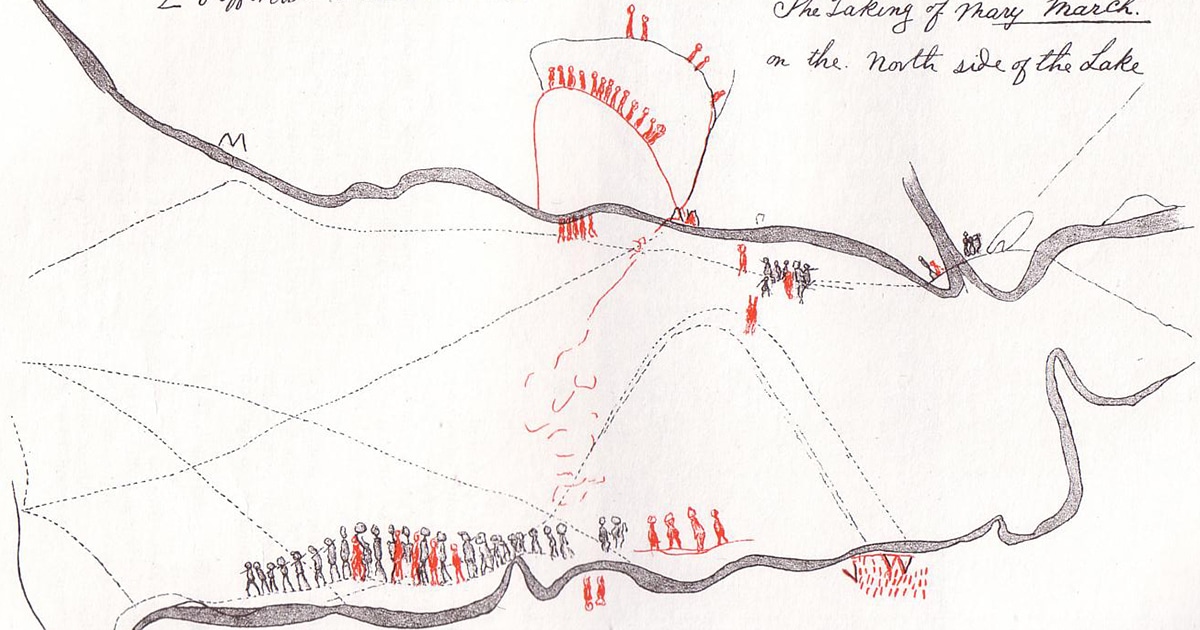The following is the conclusion of a story on an ongoing research project investigating a key episode in the history of Anglicans and the Beothuk people of Newfoundland. Read Part I.
Dr. Hans Rollmann, religious studies professor at Memorial University, calls the Rev. John Leigh “the driving force behind the institutionalization of Newfoundland Anglicanism, seeing how important local leadership would be for the isolated priests living on the island.” It was Leigh who convinced Bishop Robert Stanser of Nova Scotia of the need to have an ecclesiastical commissary in Newfoundland, taking on the position shortly before his own death from illness in 1823.
Leigh was interested in the fate of the Beothuk, the island’s Indigenous people, whom he sought to rescue “from their miserable state.” As Memorial University linguistics professor John Hewson wrote of Leigh, “His was one of many humane voices urging an end to the hostilities between the white settlers and the Beothuk, and he was the first clergyman to express publicly an interest in evangelizing them.”
Details are sparse on the relationship between the Beothuk and the Church of England in Canada, as it was known at the time. Among the strongest evidence of interaction are the two known English-Beothuk vocabularies produced by Anglican priests Leigh and the Rev. John Clinch of Trinity, Nfld.
Of the 350 known words of Beothuk, more than 200 may be found in Leigh’s vocabulary, constructed with the Beothuk woman Demasduit following her capture.
As part of her ongoing research project on Leigh and Demasduit, the Rev. Dr. Joanne Mercer, rector of the Parish of Twillingate, and her colleagues are conducting extensive archival research into Leigh’s correspondence with the Society for the Propagation of the Gospel (SPG), who sponsored Leigh’s work in Newfoundland. Mercer and her team hope to locate a foundational document from the SPG giving specific instructions about missionary interaction with the Beothuk.
Regarding the available early writings, Mercer noted that though there was much commentary about wanting to evangelize the Beothuk, “that was never successful.” Even after Demasduit was brought to the rectory and stayed with Anglican clergy, and the capture of subsequent Beothuk such as Shanawdithit who had interactions with bishops, there is no record of conversion.
From the historic perspective of the SPG, persecution and violence of settlers towards the Beothuk created their own dangers for missionary work.
“The SPG was reluctant to get involved in service to the Beothuk because of the existing controversy about their treatment by local settlers, although one of the original mandates of the SPG had been a ministry to Aboriginals,” Rollmann said.
Three-year research project
The project to learn more about Leigh and Demasduit is now well underway, thanks to an influx of funding. Along with a conference grant from the J.R. Smallwood Foundation for Newfoundland and Labrador Studies, the Anglican diocese of Central Newfoundland is making a $5,000 grant drawn from its Anglican Church of Canada Resolution Corporation refund to help with research and staging events.
This April, Mercer and Owen will meet in St. John’s, Nfld. to conduct archival research and collate their findings thus far. Public events later in the year coincide with the 200th anniversary of Leigh’s arrival. Throughout the summer, the Parish of Twillingate will host the same Truth and Reconciliation exhibit previously hosted at St. James Cathedral in Toronto, augmenting it with the story of the Beothuk people.
In the fall, Mercer plans to hold a public lecture at the Beothuk Interpretation Centre in Boyd’s Cove, Nfld. to showcase some of their research following an anticipated gathering of academics in St. John’s. That research will continue until 2019, the 200th anniversary of Demasduit’s capture.
The large number of people who regularly visit the Beothuk Centre, who have reached out to folklore researchers claiming to have had encounters with Beothuk, or who claim to have Beothuk heritage themselves, is a testament to the lingering effect of a “story [that] still haunts our memories,” Mercer said.
“This whole idea of a people who have become extinct … is a very haunting kind of story … It is a type of story that fascinates people as to how this could ever happen.”
“There’s still a huge piece of work to be done,” she added. “And we need to wrap our heads around it.”
Interested in keeping up-to-date on news, opinion, events and resources from the Anglican Church of Canada? Sign up for our email alerts .

